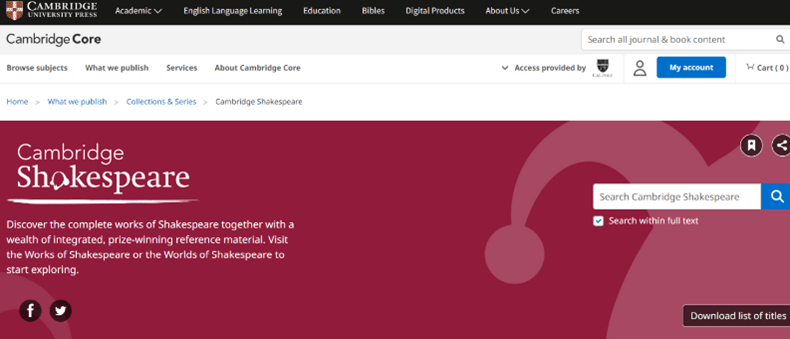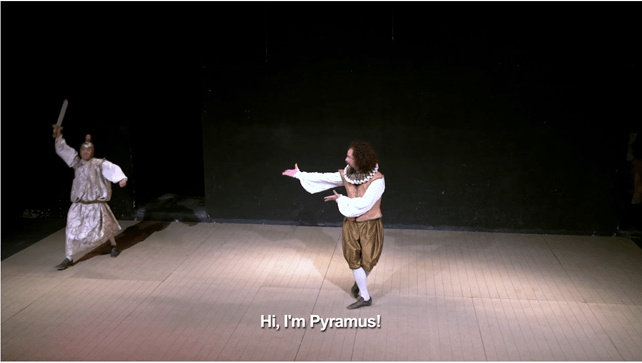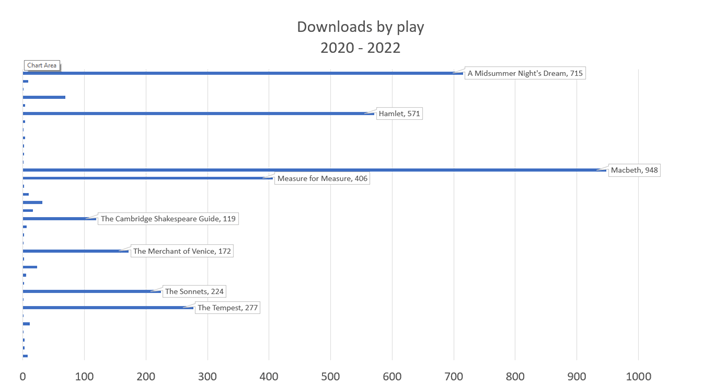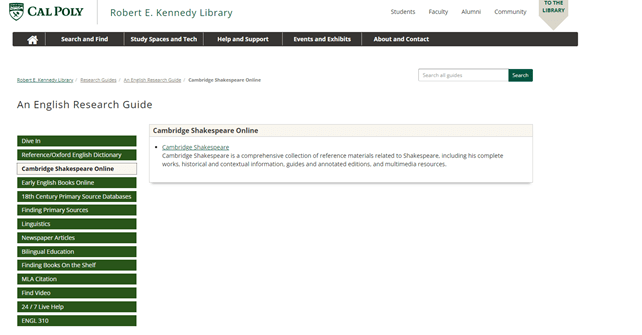Teaching successfully with Cambridge Shakespeare: the case of California Polytechnic State University
Her students were struggling. Nicole Jacobs, a Shakespeare scholar and lecturer at California Polytechnic State University, had been noticing for a while. Some editions used by English and Theater majors enrolled in her classes were not helping them. A few online resources had no explanatory or performance notes and no definitions of certain key Shakespearean vocabulary. Good editions weren’t accessible or cost too much for a student’s budget. Nonetheless, she did her best by including appropriate resources in the syllabus and reading out loud in class from good editions, like the Norton Shakespeare. And then, to her relief, she received an email from her librarian: “We’re trialing Cambridge Shakespeare”, followed by: “We’re adopting Cambridge Shakespeare”.

The next quarter, right in the middle of the pandemic, Dr. Jacobs and her students were using the platform profusely. They still are.
“My goal is to give students full electronic access to a good edition, so they don’t have to buy textbooks”, says Dr. Jacobs.
The class can do a close reading right there. They discuss the meanings of words or contextualize, and students just log into the platform and see who has played a certain role in the past, or how a certain director has staged a particular scene. At the same time, Dr. Jacobs can write on the board or use the added Worlds of Shakespeare section to show background information on things like Shakespeare’s life, the Globe, or Blackfriars.
She also changes the windows on her screen to show different movie clips previously lined up and asks students to analyze and compare performances.
“How did somebody else play this scene in the past? How did this director play the scene?”
“How did the actors play the scene in this particular version?”
“Do you feel the performance we are watching is successful? Why?”
The final project, she explains, is to conduct a review of a performance that also asks students to compare two performance notes from the Cambridge Shakespeare to the performance in question.

A Midsummer Night’s Dream, by William Shakespeare. Written by Aline de la Cruz, Artús Chávez, Fernando Córdova, Iona Weissberg and Jerónimo Best. Translated by Camilla Brett. Video edition by Raúl Huato. Courtesy of Brujas Producciones.
As a result, even the students who do not use the Cambridge Shakespeare earlier in the term use it by the final assignment. California Polytechnic State University is the institution with the most usage of Cambridge Shakespeare around the world. Different students and lecturers at the institution have downloaded content 32,917 times (unique item requests) since 2020, according to our Counter 5 compliant usage reports. This, in turn, is very good news for the library, as it means they are getting a return on their investment. The average cost per download for the past two years is 27 cents!
Analyzing the data also helps us see which plays are either studied or preferred by users. Macbeth, a Midsummers Night’s Dream, Hamlet, and Measure for Measure were read the most, followed by The Sonnets and The Cambridge Shakespeare Guide. This doesn’t mean other resources were not used. On the contrary, the long tail of plays used less than 69 times each amounts to 229 uses, a fair number considering many of the plays are not even in the syllabus.

Another key factor in the site’s usage can be credited to the library’s curation of the content. Brett Bodemer, librarian responsible for the College of Liberal Arts, says he uses Lib Guides to include any reading appropriate for Theater and English courses.
“Almost everything is also on the landing page because the user stats on this is always that some people never leave the landing page”, says Bodemer. Additionally, when a user searches for “Shakespeare plays” in their discovery system, a suggestion to use Cambridge Shakespeare appears at the top.


That doesn’t mean there can’t be improvements. In a recent email exchange, librarians at California Polytechnic pointed out the need to work together in delivering better discovery and metadata. Working together with discovery partners and the in-house Cambridge University Press development team will play a key role in the future.
When asked about what students value in the platform, Dr. Jacobs thinks for a moment and says: “I think that they like the flexibility of accessing in either HTML or PDF (which allows for screen readers) and that there are the toggle buttons when you’re using the HTML to either see or not see the explanatory notes and the textual variance.”
“A lot of people are talking about multi-modal education, the idea that you learn core concepts but then reinforce them with other modes of learning, through films and digital images and other types of media. It’s definitely something that I do in my Shakespeare class.”
Bodemer, who has a Master’s in Library and Information Science and in French Language and Literature, credits the success of Cambridge Shakespeare to several factors. A current critical apparatus for the plays (instead of an old repurposed one, like other competing platforms), a good design that keeps notes and valuable resources close by (for example, Emma Smith’s Guide to the Worlds and Works of Shakespeare), and the model of unlimited user concurrency, which allows any number of students to download resources at any given time. “It can get used thousands of times and not fall apart. Thousands of times at once! So, it’s a quality corpus of texts, really good editions, and that’s what drew my attention in the first place”. “The rest is just icing on the cake.”






